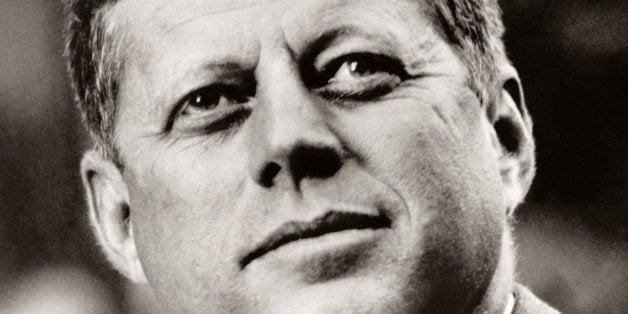
As I write this, it is 50 years and two hours since I heard five bells ring on the UPI wire, turned around and discovered that John F. Kennedy had been shot. Merriman Smith, the UPI White House Correspondent riding in the press car behind the president had grabbed the only phone in the car and had dictated a bulletin to the UPI desk and continued to report while fighting off the AP correspondent traveling with him who was trying to seize the phone to call his desk and get his story on the wire. As I recall, UPI beat AP to the story by more than 5 minutes -- a big deal in those days. Like everyone else in our business, we tuned into CBS and watched Walter Cronkite turn immortal.
We immediately sent film crews into the street to gather quotes and pictures of New York as the whole city began to mourn. We heard early on about the Zapruder film and my boss, Burt Reinhardt, immediately decided to fly down to Dallas to buy the film. Before departing, Burt called his rabbi to get in touch with Zapruder and put in a good word for us. It didn't do us any good.
I learned that Harry Truman was staying in New York at a hotel whose name I can't remember. When I got there, Truman was standing in the doorway, surrounded by other reporters answering their questions, I asked him an assignment editors question--where are you going now, President Truman? He said, "I'm going to bed." Shocked, I asked the question again, and brusquely he replies "I'm going upstairs, I'm going to bed." President Truman had supported Missouri Senator Stuart Symington for the Vice Presidency and may have felt betrayed when Kennedy switched horses and chose Lyndon Johnson. His answer seemed surly.
Twenty-five years later, I heard my voice asking the same questions in the CBS documentary, Four Days in November Perry Wolff, the documentaries producer, seems to have believed the question had historical value.
On Friday, Reinhardt appeared with the rest of the press at Zapruder's door to bid for the film. There was no bidding, Zapruder had already sold it to Life magazine. Life wanted to make sure that the film was not exploited. Reinhardt did the next best thing, he went to every 8mm developer in Dallas, left his card, and said, "If anyone comes in with film of the incident, send them over to United Press and you'll get $100." Burt went back to his hotel and received a call from the UPI Bureau Chief telling him that a woman had just arrived with a little white box in her hand and say that a developer had sent her there. The Bureau Chief asked what to do, Burt said, "Lock the door." Within hours, Burt had bought the film, sent it up to Chicago for developing and arranged to have it delivered to me in New York. That night it was shown on our client Channel Five in New York, with prints shipped to all our clients around the world.
Burt had also met Orville Nix, in Dallas. Nix, too, shot pictures of the motorcade, but he had turned his film over to the FBI. Burt said if he ever got it back to please let UPI/TN (United Press International Television News) have a look at it. A year later, Nix showed up and we bought his film as well. Its special virtue was that it showed the grassy knoll where conspiracy theorists suggested there was another gunman. Nix accepted $5,000 and a Stetson hat in payment.
The Nix film created a furor that lasted for 12 years. One frame in it seemed to show a man holding a gun, resting his arms on a white station wagon, where he would've been in a position to have shot the president. I spent a dozen years determining whether or not the grassy knoll had been the site of a second gunman. Much to the disappointment of conspiracy theorists, there really was no one there. When Frank Lindsay, the head of the company that first analyzed the film, reported that the shadowy figure showed up in only one frame and appeared to be merely a shadow made by the trees on the knoll, I thought the story was finally over. Lindsay suggested not. He said we had cleared only 15 degrees out of a 360 degree circle, and before we are done, there will probably be a dozen more theories finding other gunmen in other places and predicted the uncertainty would go on forever. He may very well have been right.
For the much longer, full story about the grassy knoll see "Shadow Of A Gunman." in The Columbia Journalism Review.